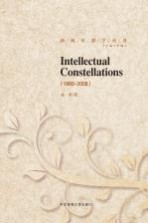
- 作 者:谷李著
- 出 版 社:北京:中国传媒大学出版社
- 出版年份:2016
- ISBN:9787565716874
- 标注页数:123 页
- PDF页数:139 页
请阅读订购服务说明与试读!
订购服务说明
1、本站所有的书默认都是PDF格式,该格式图书只能阅读和打印,不能再次编辑。
2、除分上下册或者多册的情况下,一般PDF页数一定要大于标注页数才建议下单购买。【本资源139 ≥123页】
图书下载及付费说明
1、所有的电子图书为PDF格式,支持电脑、手机、平板等各类电子设备阅读;可以任意拷贝文件到不同的阅读设备里进行阅读。
2、电子图书在提交订单后一般半小时内处理完成,最晚48小时内处理完成。(非工作日购买会延迟)
3、所有的电子图书都是原书直接扫描方式制作而成。
CHAPTER 1 INTRODUCTION 1
1.1 China and Intellectual Property 1
1.1.1 Domestication 1
1.1.2 Penetration 2
1.2 Intellectual Property Under Critique 4
1.3 A Conquest or a Retreat? 6
1.4 Waning of Socialism as Postsocialist Sentiment 8
1.5 Chapter Outline 14
CHAPTER 2 A POSTSOCIALIST FRIENDSHIP:THE AFFECTIVE PURSUIT OF SOUL AND FLESH 16
2.1 Introduction 16
2.2 Soul and Flesh:The Novel 16
2.3 The Debate on the Meaning of the Novel 21
2.4 Friendship,Affect,and Soul and Flesh Re-read 27
2.5 Epilogue 39
CHAPTER 3 CRITIQUE OF AN INTELLECTUAL FASHION:USELESS AND JIA ZHANGKE'S EMERGING IMPASS 42
3.1 Introduction:A Choreographed Encounter/non-encounter 42
3.2 Jia Zhangke's Aesthetics and Politics:Staring at the Real 44
3.2.1 The Real and the Ordinary 44
3.2.2 The Intellectuals 51
3.2.3 Aesthetics vs Politics:Recording Without Representing 53
3.3 Useless:Between the Intellectuals and the Ordinary 57
3.4 The Truth of the Choreography? 62
3.5 After Useless 63
CHAPTER 4 MAO'S POLITICAL ECONOMY,OR,FOR ANOTHER POLITICS OF CREATIVE INDUSTRY 68
4.1 Introduction 68
4.2 Politics of Creative Industries 70
4.2.1 Nicolas Garnham 70
4.2.2 Stuart Cunningham and Terry Flew 75
4.2.3 Richard Florida 79
4.2.4 Toby Miller 83
4.3 State,Market,and Mao's Political Economy 84
CHAPTER 5 VIEWS ON CREATIVE INDUSTRY:NOTES FROM CHONGQING 91
5.1 Introduction:Two Takes 91
5.1.1 Take One:Comparability and Timefulness 91
5.1.2 Take Two:What About Nanaimo? 93
5.2 Chongqing:From Heavy Industry to Creative Industry 95
5.2.1 Chongqing:An Industrial History 95
5.2.2 Toward a City of Creative Industry:Creative Industry Initiatives in Chongqing(2006—2008) 98
5.3 An Ethnographic Study 99
5.3.1 Research Questions,Interview Questions and Data Collection 99
5.3.2 Data 100
5.3.3 Findings&Discussions 109
5.4 Conclusion 111
BIBLIOGRAPHY 113
